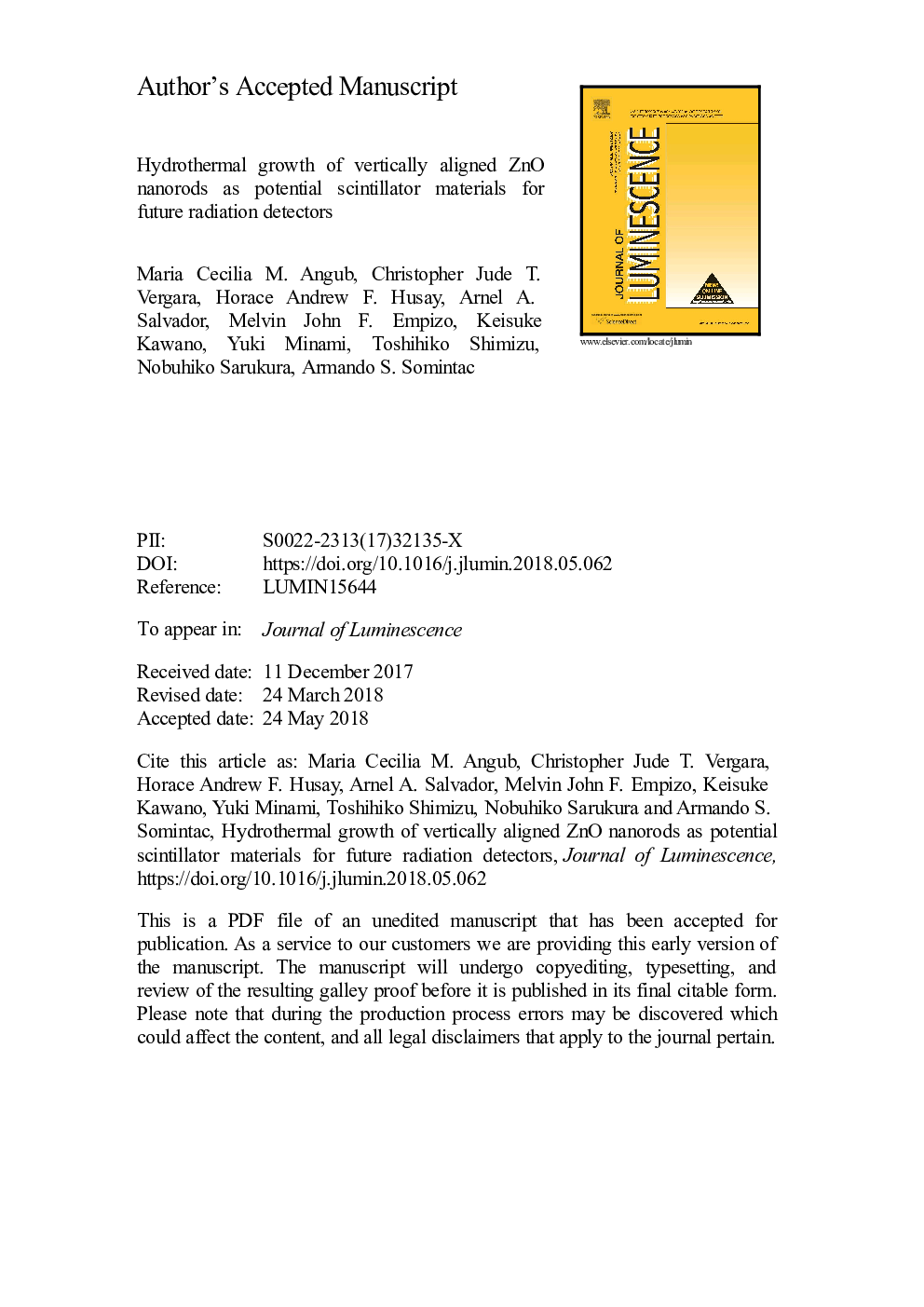| Article ID | Journal | Published Year | Pages | File Type |
|---|---|---|---|---|
| 7839736 | Journal of Luminescence | 2018 | 36 Pages |
Abstract
We investigate the hydrothermal growth of zinc oxide (ZnO) nanorods to realize their potential scintillator applications. Vertically aligned ZnO nanorods were successfully fabricated on seeded silicon (Si) substrates at a relatively low temperature of 85â¯Â°C using different hexamethylenetetramine [(CH2)6N4, HMTA] and zinc acetate dihydrate [Zn(CH3COO)2·2H2O, ZnAc] concentration ratios. Varying the precursor concentration ratio affects the nanorod dimensions which, in turn, influence the apparent densities and observed emissions. But regardless of the HMTA and ZnAc concentration ratio used, the fabricated nanorods exhibit well-defined morphologies, hexagonal crystal structure, preferential c-axis orientation, and 24-120-ps ultraviolet (UV) emissions. With these excellent structural and optical properties, the hydrothermal-grown ZnO nanorods are suggested to be used as scintillator materials which offer not only fast scintillation response but also high spatial resolution for future radiation detectors.
Related Topics
Physical Sciences and Engineering
Chemistry
Physical and Theoretical Chemistry
Authors
Maria Cecilia M. Angub, Christopher Jude T. Vergara, Horace Andrew F. Husay, Arnel A. Salvador, Melvin John F. Empizo, Keisuke Kawano, Yuki Minami, Toshihiko Shimizu, Nobuhiko Sarukura, Armando S. Somintac,
